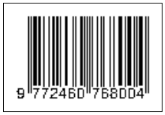Prediksi Diabetes Berdasarkan Pengukuran Mean Amplitude Glycemic Excursion (MAGE) Menggunakan Naïve Bayes
Lailis Syafa’ah(1), M Syaiful Ma’arif(2), Amrul Faruq(3*)
(1) Jurusan Teknik Elektro, Fakultas Teknik Universitas Muhammadiyah Malang
(2) Jurusan Teknik Elektro, Fakultas Teknik Universitas Muhammadiyah Malang
(3) Jurusan Teknik Elektro, Fakultas Teknik Universitas Muhammadiyah Malang
(*) Corresponding Author
Abstract
Keywords
Full Text:
PDFReferences
[1] D. O. F. Diabetes, “Diagnosis and classification of diabetes mellitus,” Diabetes Care, vol. 33, no. SUPPL. 1, 2010.
[2] T. A. Peyser, A. K. Balo, B. A. Buckingham, I. B. Hirsch, and A. Garcia, “Glycemic Variability Percentage: A Novel Method for Assessing Glycemic Variability from Continuous Glucose Monitor Data,” Diabetes Technol. Ther., vol. 20, no. 1, pp. 6–16, 2018, [Online]. Available: https://pubmed.ncbi.nlm.nih.gov/29227755/. [Accessed: 16-Aug-2020]
[3] X. Yu et al., “Calculating the Mean Amplitude of Glycemic Excursions from Continuous Glucose Data Using an Open-Code Programmable Algorithm Based on the Integer Nonlinear Method,” Comput. Math. Methods Med., vol. 2018, 2018, [Online]. Available: https://pubmed.ncbi.nlm.nih.gov/29707038/ [Accessed: 16-Aug-2020]
[4] L. Syafa ’ah, A. Tjokroprawiro, M. Rasad Indra, D. Sargowo, and 5 Muladi, “Expert System for Blood Glucose Fluctuations Measurement Based on MAGE (Mean Amplitude of Glycemic Excursion) and HbA1c On Diabetic Using K-NN (Nearest Neighbor),” J. Basic. Appl. Sci. Res, vol. 4, no. 12, pp. 135–141, 2014 [Online]. Available:http://research-report.umm.ac.id/index.php/research-report/article/viewFile/904/1111 [Accessed: 10-Jul-2020]
[5] P. A. Baghurst, “Calculating the mean amplitude of glycemic excursion from continuous glucose monitoring data: An automated algorithm,” Diabetes Technol. Ther., vol. 13, no. 3, pp. 296–302, 2011, [Online]. Available: https://pubmed.ncbi.nlm.nih.gov/21291334/ [Accessed: 13-Aug-2020]
[6] G. Fritzsche, K. D. Kohnert, P. Heinke, L. Vogt, and E. Salzsieder, “The use of a computer program to calculate the mean amplitude of glycemic excursions,” Diabetes Technol. Ther., vol. 13, no. 3, pp. 319–325, 2011, [Online]. Available: https://pubmed.ncbi.nlm.nih.gov/21291337/ [Accessed: 16-Aug-2020]
[7] J. Ker, L. Wang, J. Rao, and T. Lim, “Deep Learning Applications in Medical Image Analysis,” IEEE Access, vol. 6, no. May 2018, pp. 9375–9379, 2017, [Online]. Available: https://ieeexplore.ieee.org/document/8241753 [Accessed: 17-Aug-2020]
[8] I. N. T. Wirawan and I. Eksistyanto, “Penerapan Naive Bayes Pada Intrusion Detection System Dengan Diskritisasi Variabel,” JUTI J. Ilm. Teknol. Inf., vol. 13, no. 2, p. 182, 2015, [Online]. Available: http://juti.if.its.ac.id/index.php/juti/article/view/487/301 [Accessed: 16-Aug-2020]
[9] D. Xhemali, C. J. Hinde, and R. G. Stone, “Naive Bayes vs. Decision Trees vs. Neural Networks in the Classification of Training Web Pages,” Int. J. Comput. Sci., vol. 4, no. 1, pp. 16–23, 2009. [Online]. Available: https://www.researchgate.net/publication/41392270/ [Accessed: 16-Aug-2020]
[10] L. Syafa’ah, M. H. Purnomo, and S. Basuki, “Discrete mean amplitude of glycemic excursion (MAGE) measurement on diabetics with spline interpolation method,” Int. J. Electr. Eng. Informatics, vol. 10, no. 2, pp. 259–270, 2018, [Online]. Available: http://research-report.umm.ac.id/index.php/research-report/article/viewFile/904/1111 [Accessed: 16-Aug-2020]
[11] L. Syafaah, S. Basuki, F. Dwi, and S. Sumadi, “Study on Diabetes Prediction Based on Discrete and Continuous Mean Amplitude of Glycemic Excursions ( MAGE ) using Machine Learning Methods,” vol. 8, no. 4, 2019, [Online]. Available: https://beei.org/index.php/EEI/article/view/2387 [Accessed: 21-Aug-2020]
[12] J. H. DeVries, “Glucose variability: Where it is important and how to measure it,” Diabetes, vol. 62, no. 5, pp. 1405–1408, 2013, [Online]. Available: https://pubmed.ncbi.nlm.nih.gov/23613566/ [Accessed: 16-Aug-2020]
[13] M. Heller, P. Edelstein, and M. Mayer, “Membrane-bound enzymes. III. Protease activity in leucocytes in relation to erythrocyte membranes,” BBA - Biomembr., vol. 413, no. 3, pp. 472–482, 1975, [Online]. Available: https://pubmed.ncbi.nlm.nih.gov/92/ [Accessed: 16-Aug-2020]
[14] F. Cavalot, “Do data in the literature indicate that glycaemic variability is a clinical problem? Glycaemic variability and vascular complications of diabetes,” Diabetes, Obes. Metab., vol. 15, no. S2, pp. 3–8, 2013, [Online]. Available: https://pubmed.ncbi.nlm.nih.gov/24034513/ [Accessed: 1-Sep-2020]
[15] A. A. Kazi and L. Blonde, Classification of diabetes mellitus, vol. 21, no. 1. 2001.
[16] S. Suh and J. H. Kim, “Glycemic variability: How do we measure it and why is it important?,” Diabetes Metab. J., vol. 39, no. 4, pp. 273–282, 2015, [Online]. Available: https://www.ncbi.nlm.nih.gov/pmc/articles/PMC4543190/ [Accessed: 16-Aug-2020]
[17] J. Wadén, C. Forsblom, L. M. Thorn, D. Gordin, M. Saraheimo, and P. H. Groop, “A1C variability predicts incident cardiovascular events, microalbuminuria, and overt diabetic nephropathy in patients with type 1 diabetes,” Diabetes, vol. 58, no. 11, pp. 2649–2655, 2009, [Online]. Available: https://pubmed.ncbi.nlm.nih.gov/19651819/ [Accessed: 16-Aug-2020]
[18] F. J. Service, G. D. Molnar, J. W. Rosevear, E. Ackerman, L. C. Gatewood, and W. F. Taylor, “Mean amplitude of glycemic excursions, a measure of diabetic instability.,” Diabetes, vol. 19, no. 9, pp. 644–655, 1970, [Online]. Available: https://pubmed.ncbi.nlm.nih.gov/5469118/ [Accessed: 16-Aug-2020]
[19] D. V. Griffiths and I. M. Smith, “Numerical methods for engineers, second edition,” Numer. Methods Eng. Second Ed., pp. 1–475, 2006.
[20] M. Irfan, W. Uriawan, O. T. Kurahman, M. A. Ramdhani, and I. A. Dahlia, “Comparison of Naive Bayes and K-Nearest Neighbor methods to predict divorce issues,” IOP Conf. Ser. Mater. Sci. Eng., vol. 434, no. 1, 2018, [Online]. Available: https://www.proquest.com/docview/2557157531 [Accessed: 16-Aug-2020]
[21] Bustami, “Penerapan Algoritma Naive Bayes untuk Mengklasifikasi Data Nasabah,” TECHSI J. Penelit. Tek. Inform., vol. 4, pp. 127–146, 2010. [Online]. Available: http://journal.uad.ac.id/index.php/jifo/article/view/2086 [Accessed: 16-Aug-2020]
[22] K. Chai, H. T. Hn, and H. L. Cheiu, “Naive-Bayes Classification Algorithm,” Proc. 25th Annu. Int. ACM SIGIR Conf. Res. Dev. Inf. Retr., pp. 97–104, 2002,
[23] H. Rosdianto and M. Toifur, “Implementasi Teori Distribusi Probabilitas Gaussian Pada Kualitas Rangkaian Penyearah Gelombang Penuh,” Spektra J. Fis. dan Apl., vol. 2, no. 1, pp. 83–90, 2017, [Online]. Available: https://www.researchgate.net/publication/316596344/ [Accessed: 16-Aug-2020]
[24] C. R. Wilson Van Voorhis and B. L. Morgan, “Understanding Power and Rules of Thumb for Determining Sample Sizes,” Tutor. Quant. Methods Psychol., vol. 3, no. 2, pp. 43–50, 2007, [Online]. Available: https://www.tqmp.org/RegularArticles/vol03-2/p043/p043.pdf [Accessed: 16-Aug-2020]
Article Metrics
Refbacks
- There are currently no refbacks.
Copyright (c) 2022 IJEIS (Indonesian Journal of Electronics and Instrumentation Systems)

This work is licensed under a Creative Commons Attribution-ShareAlike 4.0 International License.
View My Stats1








